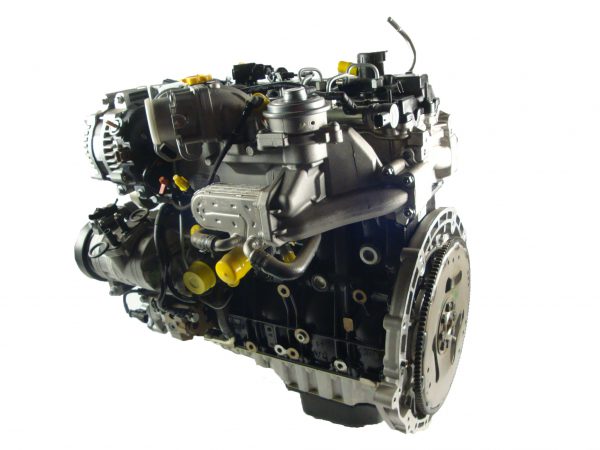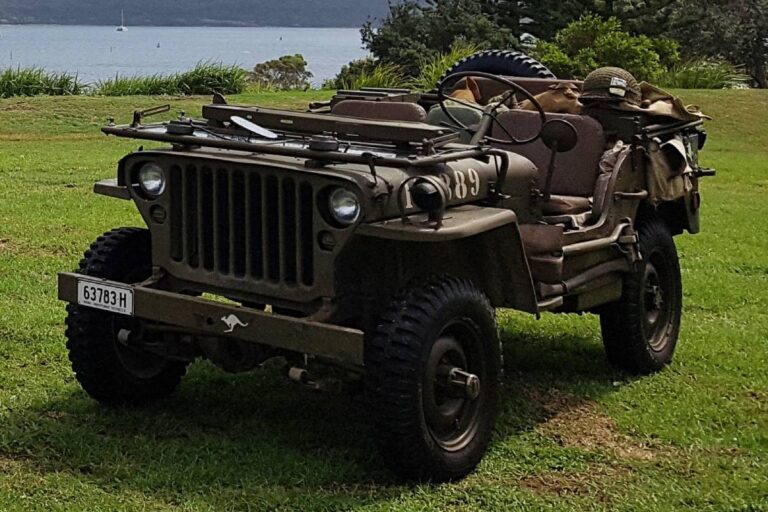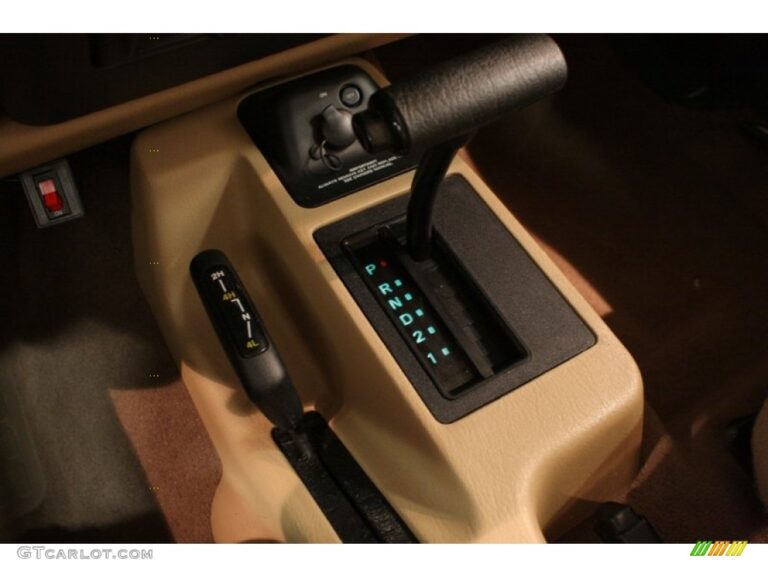Jeep Cherokee Engines Wiki: A Comprehensive Guide to Its Powertrains
Jeep Cherokee Engines Wiki: A Comprehensive Guide to Its Powertrains jeeps.truckstrend.com
The Jeep Cherokee, an icon of American automotive ingenuity, has carved its niche as a versatile and enduring vehicle, equally at home on rugged trails and urban streets. Central to its long-standing appeal and diverse capabilities are the engines that have powered it through multiple generations. The "Jeep Cherokee Engines Wiki" serves as an indispensable resource for understanding this critical aspect of the vehicle’s identity. It’s a comprehensive knowledge base detailing every powertrain option offered, from the legendary inline-sixes of the classic XJ to the sophisticated turbocharged units of the modern KL.
For current owners, prospective buyers, seasoned mechanics, and even casual enthusiasts, delving into this "wiki" is paramount. It provides crucial insights into performance characteristics, common maintenance needs, potential challenges, and the historical evolution of the Cherokee’s heart. Understanding these engines is not just about technical specifications; it’s about appreciating the engineering philosophies that shaped each era of the Cherokee, influencing everything from its off-road prowess to its daily drivability and long-term reliability. This guide aims to be that definitive "wiki," offering a deep dive into the engines that have made the Jeep Cherokee a true legend.
Jeep Cherokee Engines Wiki: A Comprehensive Guide to Its Powertrains
The XJ Era (1984-2001): The Legendary Workhorses
The XJ generation Jeep Cherokee is arguably the most iconic, revered for its robust unibody construction, compact size, and, most importantly, its incredibly durable engines. This era laid the groundwork for the Cherokee’s reputation for reliability and off-road capability.
- 2.5L AMC Straight-Four (TBI & MPI): Initially offered with Throttle Body Injection (TBI) and later Multi-Port Injection (MPI), this four-cylinder engine was the base option for the XJ. Producing around 117-130 horsepower and 135-149 lb-ft of torque, it was adequate for light duty and offered reasonable fuel economy for its time. While not a powerhouse, it was simple, reliable, and easy to maintain. Common issues were generally minor, relating to sensors or vacuum leaks, but it lacked the grunt desired by many Jeep owners.
- 2.8L GM V6 (Chevy LR2): A brief and less common offering from 1984-1986, this General Motors-sourced V6 produced about 110 horsepower and 145 lb-ft of torque. It was notorious for reliability issues, including overheating and cracked cylinder heads, leading to its quick replacement. Most enthusiasts avoid this engine due to its problematic nature.
- 4.0L AMC Straight-Six (Renix & HO): This is the engine that truly defined the XJ Cherokee and cemented its legendary status. Introduced in 1987, the 4.0L inline-six was praised for its bulletproof reliability, ample low-end torque, and smooth power delivery.
- Renix (1987-1990): Named after the Renault-Bendix engine management system, these early 4.0L engines produced around 177 horsepower and 220 lb-ft of torque. While robust, the Renix system can be more challenging to diagnose due to its proprietary nature and lack of OBD-II.
- High Output (HO) (1991-2001): With an improved intake manifold, fuel injectors, and a different engine management system (Chrysler’s OBD-I/OBD-II), the HO version boosted power to 190 horsepower and torque to 225 lb-ft. This version is universally considered the most desirable for its blend of power, reliability, and ease of maintenance.
- Common 4.0L Issues: Despite its legendary status, the 4.0L isn’t without its quirks. Common issues include cracked exhaust manifolds (due to heat cycling), rear main seal leaks (more of a nuisance than a critical failure), and occasional cooling system problems (water pump, thermostat, radiator). Regular cooling system maintenance is crucial for its longevity.
- Diesel Options (Europe): In certain markets, particularly Europe, the XJ was available with diesel engines, including a 2.1L Renault I4 (1985-1992) and a 2.5L VM Motori I4 (1993-2001). These offered better fuel economy but were less powerful and not officially sold in North America.

Practical Advice for XJ Owners/Buyers: The 4.0L HO is the engine to seek out. Prioritize models with a well-maintained cooling system. For any XJ, inspect for rust, especially in the unibody frame rails, and check for signs of neglect, as even the 4.0L can suffer if poorly maintained. Parts for the 4.0L are abundant and relatively inexpensive.
The KJ Era (2002-2007): New Millennium, New Engines (Liberty in North America)
Following the XJ, the Cherokee (rebadged as the Liberty in North America) entered a new phase with a more rounded design and new engine choices, moving away from the straight-six.

- 3.7L PowerTech V6: This SOHC (Single Overhead Cam) V6 engine was the primary gasoline powertrain for the KJ, producing 210 horsepower and 235 lb-ft of torque. It offered a significant power bump over the 4.0L I6 but with a different power delivery, favoring higher RPMs. It was reasonably reliable but had some known issues.
- Common Issues: Valve seat recession (especially in earlier models, leading to misfires), oil sludge if oil changes were neglected, and occasional head gasket failures. Regular, quality oil changes and monitoring engine temperature are crucial for its longevity.
- 2.4L PowerTech I4: Carried over from other Chrysler platforms, this DOHC (Dual Overhead Cam) four-cylinder produced 150 horsepower and 165 lb-ft of torque. It was a less common option, primarily offered in 2WD base models, and generally considered underpowered for the Liberty’s weight, especially when equipped with 4WD.
- 2.8L VM Motori CRD Diesel (2005-2006 North America): This turbocharged common-rail diesel (CRD) engine was a unique offering for the North American market, producing 160 horsepower and a robust 295 lb-ft of torque. It was highly sought after for its excellent fuel economy and strong low-end torque, ideal for towing and off-roading.
- Common Issues: The CRD required specific maintenance. Issues included timing belt failures if not replaced on schedule (critical interference engine), glow plug problems, clogged EGR valves, turbocharger issues, and swirl motor failures. Finding parts and mechanics knowledgeable in these engines can be a challenge.
Practical Advice for KJ Owners/Buyers: The 3.7L V6 is generally robust with proper maintenance. For the CRD, meticulously check maintenance records, especially for timing belt changes. Be prepared for potentially higher maintenance costs and specialized knowledge for the diesel.
The KK Era (2008-2012): Evolution of the Liberty
The KK generation of the Liberty (Cherokee) retained much of the mechanical underpinnings of the KJ but with a more boxy, traditional Jeep aesthetic. Engine choices remained largely the same.
- 3.7L PowerTech V6: This was the sole gasoline engine option for the North American KK, carrying over with the same specifications and characteristics as in the KJ. By this point, many of the initial kinks from its introduction had been ironed out, and it continued to be a reliable workhorse with proper care.
- 2.8L VM Motori CRD Diesel: This engine continued to be offered in international markets but was no longer available in North America after the 2006 model year.
Practical Advice for KK Owners/Buyers: Focus on the 3.7L’s maintenance history. Given its age, check for rust, especially on the undercarriage, and common wear items like suspension components.
The KL Era (2014-2023): Modern Crossover Powertrains
The KL generation marked a significant departure, transforming the Cherokee into a modern unibody crossover with independent suspension and contemporary engine technologies aimed at efficiency and refinement.
- 2.4L Tigershark MultiAir I4: The base engine, producing 184 horsepower and 171 lb-ft of torque. This engine utilizes Fiat’s MultiAir technology for variable valve lift, aiming for better fuel economy and performance.
- Common Issues: Early models experienced excessive oil consumption and some reports of lifter noise or engine mounts issues. Jeep issued software updates and revised components to address some of these.
- 3.2L Pentastar V6: A scaled-down version of Chrysler’s popular 3.6L Pentastar, this V6 produced 271 horsepower and 239 lb-ft of torque. It quickly became the preferred option for its smooth power delivery, refinement, and solid reliability, offering a significant performance upgrade over the 2.4L.
- Common Issues: While generally reliable, early Pentastar engines across various Chrysler vehicles had some issues with oil filter housing leaks, thermostat housing leaks, and occasionally rocker arm/lifter noise. Most of these were addressed in later production runs or with updated parts.
- 2.0L Hurricane Turbo I4 (2019+): Introduced later in the KL’s production, this turbocharged direct-injection four-cylinder is the most powerful option, delivering 270 horsepower and an impressive 295 lb-ft of torque. It offers excellent low-end grunt and improved fuel economy compared to the V6, though it requires premium fuel for maximum performance.
- Common Issues: As a newer, more complex engine, it can be more sensitive to maintenance. Some early reports related to turbocharger wastegate issues or oil consumption, but these are less widespread than some earlier engine issues. Direct injection engines can be prone to carbon buildup on intake valves over time.
Practical Advice for KL Owners/Buyers:
- Choosing an engine: The 3.2L Pentastar V6 offers a great balance of power, refinement, and proven reliability for most users. The 2.0L Turbo is excellent for those prioritizing performance and fuel economy, but be mindful of its complexity and potential for higher repair costs if issues arise. The 2.4L is suitable for light-duty city driving.
- Maintenance: Modern engines require specific oil types and regular changes. For the 2.0L Turbo, adhering to the recommended maintenance schedule and using quality fuel is critical. Direct injection engines may benefit from periodic intake cleaning.
Important Considerations & Maintenance Tips Across Generations
Regardless of the Cherokee generation or engine, consistent and proactive maintenance is the cornerstone of longevity and reliability.
- Regular Oil Changes: Always use the manufacturer-recommended oil type and viscosity. This is especially crucial for modern engines with tight tolerances and complex systems (e.g., MultiAir, turbochargers). Neglecting oil changes can lead to sludge buildup, premature wear, and costly repairs.
- Cooling System Maintenance: For all engines, but especially the 4.0L I6, the cooling system is paramount. Regularly check coolant levels, inspect hoses for cracks or swelling, and consider replacing the thermostat, water pump, and radiator every 100,000 miles or so as preventative maintenance. Overheating is a quick way to destroy an engine.
- Fluid Checks: Don’t forget transmission fluid, differential fluid (critical for 4WD models), power steering fluid, and brake fluid. These fluids degrade over time and directly impact component lifespan.
- Tune-ups: Replace spark plugs, air filters, and fuel filters (if applicable) according to the service schedule. Clean air filters improve fuel economy and performance, while fresh spark plugs ensure efficient combustion.
- Listen to Your Engine: Pay attention to new noises, vibrations, or changes in performance. Early detection of issues can prevent minor problems from escalating into major, expensive repairs.
- Aftermarket Support: For older generations like the XJ, aftermarket parts and knowledge are incredibly abundant, making repairs and upgrades relatively easy and affordable. Newer generations may rely more on OEM parts and dealer expertise.
- Pre-Purchase Inspection: When buying a used Cherokee, always get a pre-purchase inspection by a trusted mechanic. They can identify fluid leaks, engine noises, rust, and other potential issues that might not be obvious to an untrained eye. Check service records if available.
Conclusion: The Heart of the Jeep Cherokee
The journey through the Jeep Cherokee’s engine history reveals a fascinating evolution, from the rugged simplicity of the XJ’s inline-six to the sophisticated, efficient powertrains of the modern KL. Each engine, in its own way, contributed to the Cherokee’s enduring legacy, offering a unique blend of power, reliability, and character.
Understanding the specifics of each engine family—their strengths, weaknesses, and maintenance requirements—is not merely academic. It empowers owners and prospective buyers to make informed decisions, ensuring their Cherokee performs optimally, lasts longer, and provides the iconic Jeep experience it’s known for. Whether you seek the legendary durability of a 4.0L, the torque of a CRD diesel, or the modern efficiency of a turbocharged I4, the "Jeep Cherokee Engines Wiki" is your indispensable guide to the heart of this beloved vehicle.
Jeep Cherokee Engines Wiki: Summary Table & Estimated Costs
This table provides a comprehensive overview of the primary engines offered in the Jeep Cherokee across its main generations. The "Typical Used Engine Cost Range (Estimate)" is highly variable and depends on condition (used, rebuilt, new), supplier, and regional market. These figures are for the engine assembly only, not including installation.
| Generation | Engine Code/Name | Type | Displacement | HP Range | Torque Range | Fuel Type | Key Characteristics/Notes | Typical Used Engine Cost Range (Estimate) |
|---|---|---|---|---|---|---|---|---|
| XJ | 2.5L AMC I4 (TBI/MPI) | I4 | 2.5L | 117-130 | 135-149 | Gasoline | Reliable but underpowered; simple to maintain. | $500 – $1500 |
| (1984-2001) | 2.8L GM V6 | V6 | 2.8L | 110 | 145 | Gasoline | Avoid; prone to overheating & head issues. | $300 – $800 (if found) |
| 4.0L AMC I6 (Renix) | I6 | 4.0L | 177 | 220 | Gasoline | Legendary reliability, strong torque; Renix system. | $800 – $2000 | |
| 4.0L AMC I6 (HO) | I6 | 4.0L | 190 | 225 | Gasoline | Most desirable XJ engine; excellent reliability & power. | $1000 – $2500+ (Used/Rebuilt) | |
| KJ/KK | 3.7L PowerTech V6 | V6 | 3.7L | 210 | 235 | Gasoline | Primary gas engine; good power, some oil sludge/valve issues. | $600 – $2000 |
| (2002-2012) | 2.4L PowerTech I4 | I4 | 2.4L | 150 | 165 | Gasoline | Less common, generally underpowered for the vehicle. | $500 – $1500 |
| 2.8L VM Motori CRD | I4 | 2.8L | 160 | 295 | Diesel | Excellent torque/MPG; requires specific maintenance (timing belt). | $1500 – $3500+ | |
| KL | 2.4L Tigershark MultiAir I4 | I4 | 2.4L | 184 | 171 | Gasoline | Base engine; decent MPG, some early oil consumption reports. | $1000 – $2500 |
| (2014-2023) | 3.2L Pentastar V6 | V6 | 3.2L | 271 | 239 | Gasoline | Smooth, refined, and reliable; popular upgrade. | $1200 – $3000 |
| 2.0L Hurricane Turbo I4 | I4 | 2.0L | 270 | 295 | Gasoline | Powerful, torquey, good MPG; requires premium fuel & specific care. | $1500 – $4000+ |
Disclaimer: Engine costs are highly variable estimates for used or rebuilt units. Prices can fluctuate significantly based on mileage, condition, warranty, supplier, and market demand. Always get multiple quotes and verify the engine’s condition.
Frequently Asked Questions (FAQ) About Jeep Cherokee Engines
Q1: What is the most reliable Jeep Cherokee engine?
A1: The 4.0L AMC Straight-Six (especially the High Output version from 1991-2001) found in the XJ generation is widely considered the most reliable and durable engine ever put into a Jeep Cherokee. With proper maintenance, these engines can easily last 200,000 to 300,000 miles or more.
Q2: Which Cherokee engine has the best fuel economy?
A2: Among gasoline engines, the 2.0L Hurricane Turbo I4 in the KL generation (2019+) generally offers the best combined fuel economy, followed by the 2.4L Tigershark I4. For pure fuel efficiency, the 2.8L VM Motori CRD Diesel (available in KJ/KK in some markets) typically beats all gasoline options.
Q3: Are the diesel Cherokee engines (CRD) good?
A3: The 2.8L VM Motori CRD diesel offers excellent low-end torque and impressive fuel economy, making it great for towing and off-roading. However, it requires specific, often more expensive, maintenance (e.g., timing belt changes) and can have specific issues (e.g., glow plugs, EGR, swirl motor). It’s a great engine if properly maintained, but neglect can lead to costly repairs.
Q4: Can I swap a 4.0L engine into a newer generation Cherokee (KJ, KK, or KL)?
A4: While technically possible with extensive fabrication, swapping a 4.0L I6 into a newer generation Cherokee (KJ, KK, or KL) is highly impractical and not recommended for most people. The newer generations use completely different unibody structures, engine mounts, transmission interfaces, and complex electronic control systems that are incompatible with the older 4.0L. It would be a massive, custom engineering project.
Q5: What are common issues with the 3.7L V6 engine in the KJ/KK?
A5: While generally reliable, the 3.7L PowerTech V6 can experience valve seat recession (leading to misfires), especially in earlier models, and can be prone to oil sludge if oil changes are neglected. Occasional head gasket failures are also reported. Regular, quality oil changes and monitoring engine temperature are key to its longevity.
Q6: How often should I change the oil in my Jeep Cherokee?
A6: Always follow the manufacturer’s recommendations in your owner’s manual. For older models like the XJ, 3,000-5,000 miles is typical. For newer KL models, the recommended interval can be 7,500-10,000 miles or annually, depending on driving conditions, often with an oil life monitoring system. Using the correct type and viscosity of oil is just as important as the frequency.
Q7: What should I look for when buying a used Jeep Cherokee, especially regarding the engine?
A7: Beyond general vehicle checks (rust, body damage, interior condition), specifically for the engine:
- Listen for abnormal noises: Tapping, knocking, whining, or grinding.
- Check for fluid leaks: Under the vehicle, around the engine, and check fluid levels.
- Look for smoke: Blue (oil burning), white (coolant burning), or black (rich fuel mixture).
- Check the exhaust: Excessive condensation or unusual smells.
- Review maintenance records: Look for consistent oil changes, major service items (e.g., timing belt on CRD), and any past major repairs.
- Test drive: Check for smooth acceleration, proper shifting, and no warning lights.
- Get a pre-purchase inspection: A professional mechanic can spot issues you might miss.

.JPG/revision/latest?cb=20191024022616)




